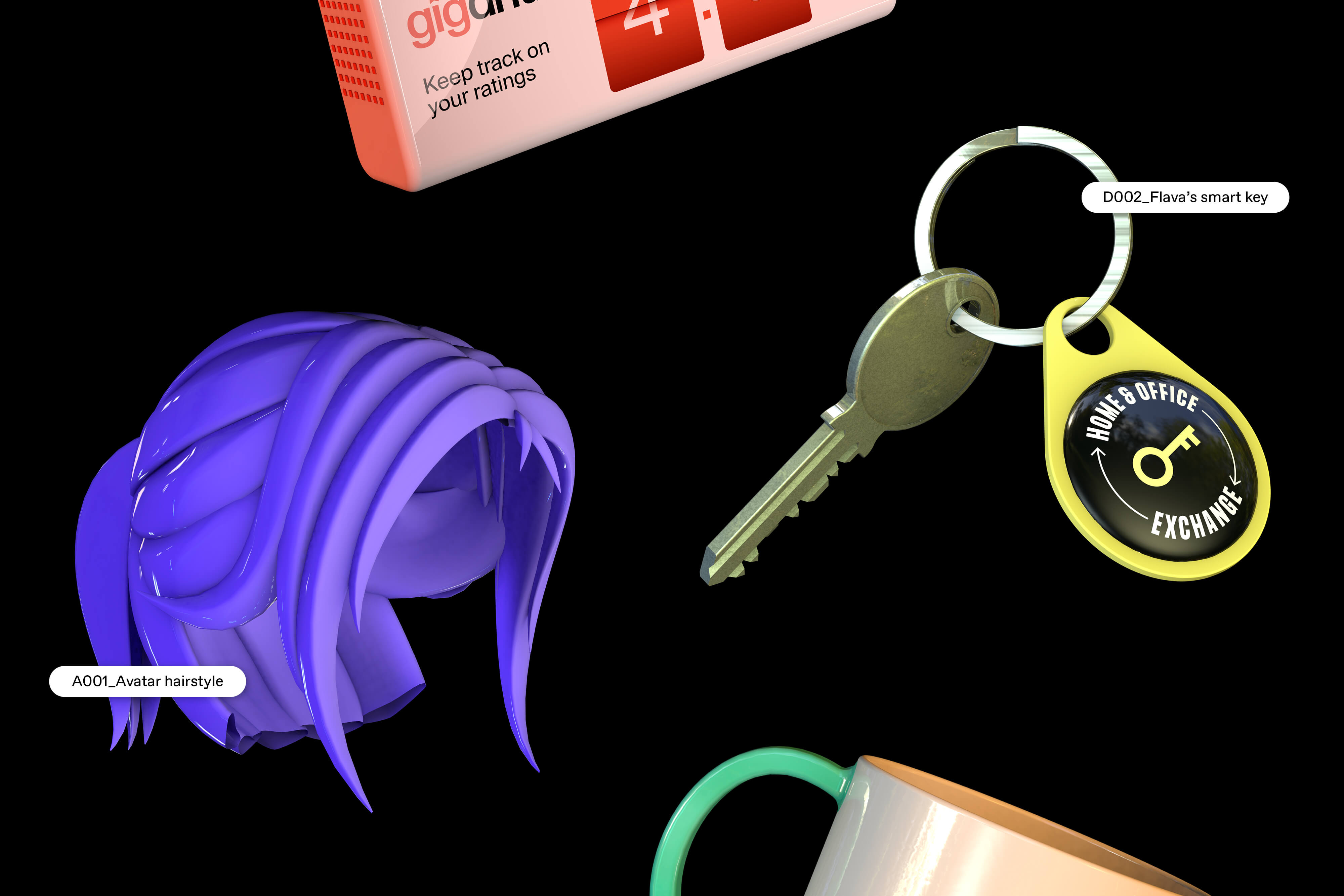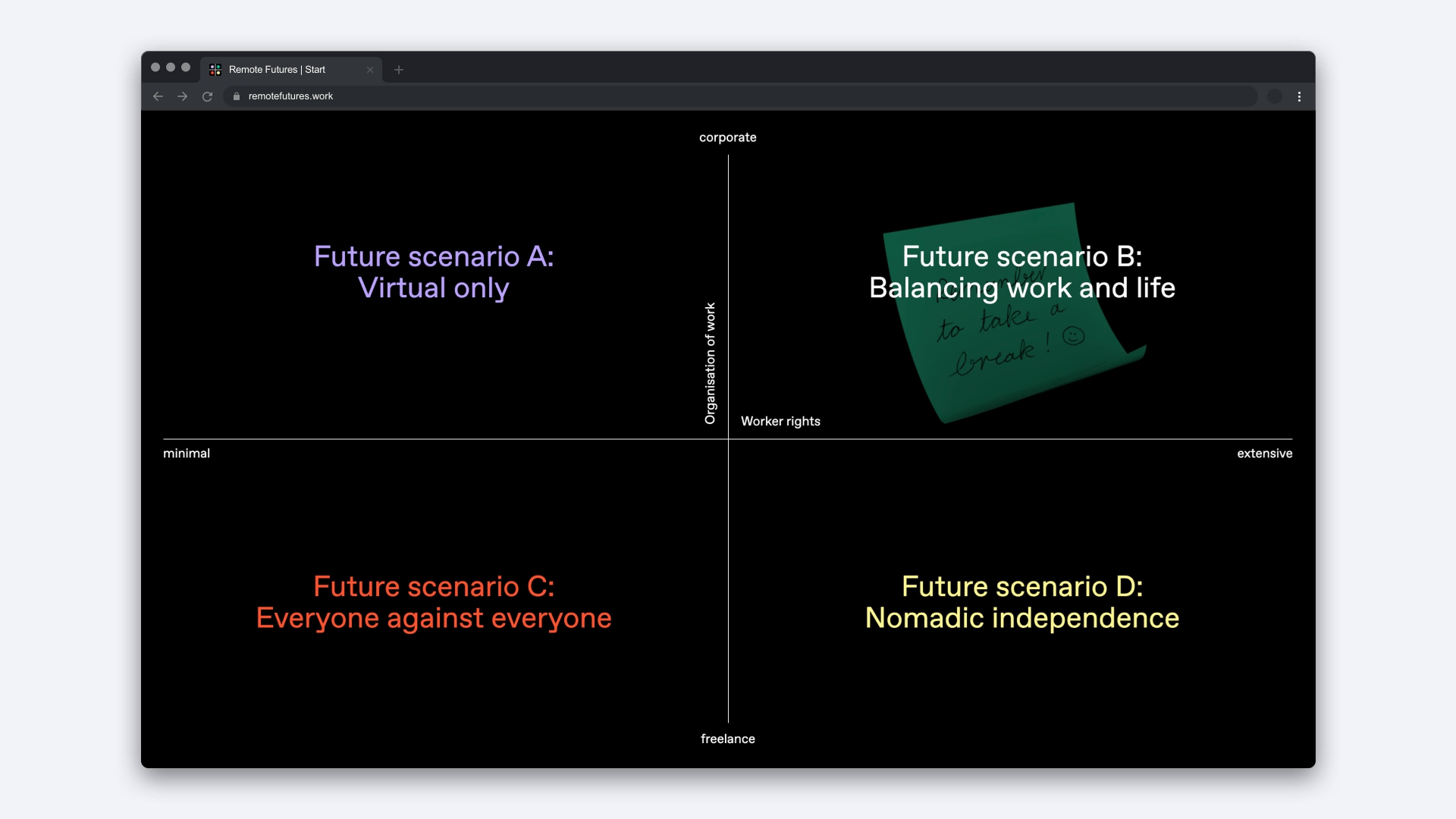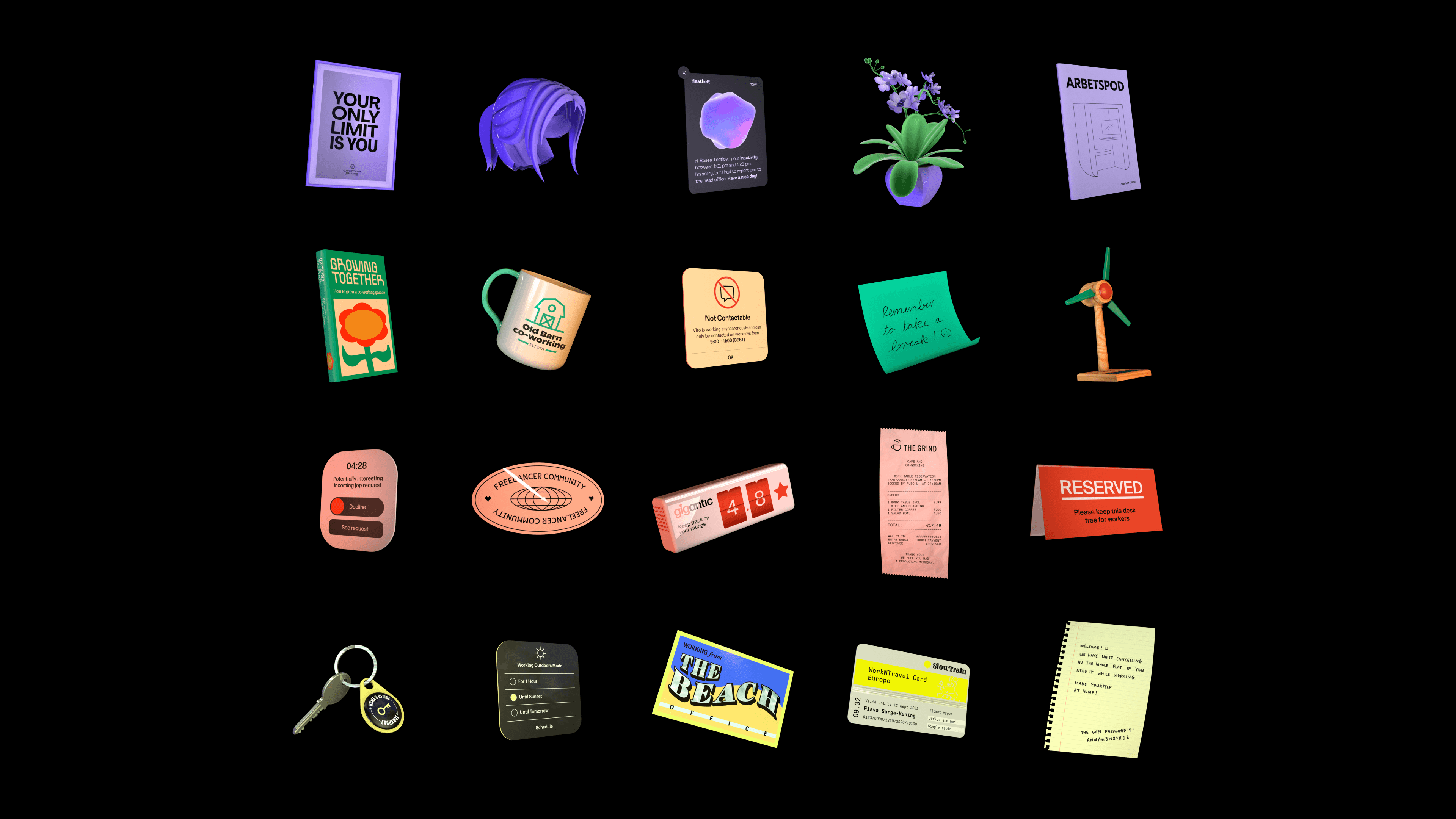
Making future scenarios tangible through animated 3D future artefacts.
Project
Remote Futures
Services
3D Design
Consultancy
In collaboration with
Elena Bauer
Lunia D'Ambrosio
I collaborated with Elena Bauer and Lunia D'Ambrosio as a 3D Designer and Consultant for their master's project "Remote Futures – How will remote work shape our future work lives?".
The project Remote Futures aims to provide an idea of what the future work situation may look like for the ever-increasing proportion of us who will not necessarily work in a physical workplace anymore. It envisions four personas in different work-life scenarios in 2030. Each persona is accompanied by 3D future artefacts that make their lives and conditions easier to imagine. Artefacts are presented in order to avoid showing an exhaustive picture of a predicted future, but allow for speculation about the world they belong to. In collaboration with them, I conceptualized, designed and created these 3D future artefacts.
See the full project here: www.remotefutures.work

The result of the theoretical research culminated in a future matrix featuring four distinct future narratives. Each pathway required objects, in this instance, artefacts, to advance the storyline.
During the process we started drafting the future artefacts by thinking about their conceptual meaning. So for each artefact we gathered inspiration, made flat design sketches which we eventually took into a 3D software.
This allowed us not only to make the artefacts appear real and tangible, but also employ different light settings in each future scenario, to create a distinct mood.

Future scenario A: Virtual only
In future scenario A the acceleration of remote work has led to people being expected to work in entirely virtual work situations, where they experience minimal human connection.
Future scenario B: Balancing work and life
Through newly drafted laws and regulations the acceleration of remote work has reduced the stress on urban areas and made rural regions a conceivable living location for many people.
Future scenario C: Everyone against everyone
In Future scenario C an increase in freelance and gig work exacerbated by remote work has led to an erosion of worker protections, because no action has been taken to address the new challenges.
Future scenario D: Nomadic independence
In this scenario active measures were taken to strengthen worker protections where they were lacking. A digital nomad lifestyle became achievable for a large group of workers, who are travelling and working at the same time.

Making future scenarios tangible through animated 3D future artefacts.
Project
Remote Futures
Services
3D Design
Consultancy
In collaboration with
Elena Bauer
Lunia D'Ambrosio
I collaborated with Elena Bauer and Lunia D'Ambrosio as a 3D Designer and Consultant for their master's project "Remote Futures – How will remote work shape our future work lives?".
The project Remote Futures aims to provide an idea of what the future work situation may look like for the ever-increasing proportion of us who will not necessarily work in a physical workplace anymore. It envisions four personas in different work-life scenarios in 2030. Each persona is accompanied by 3D future artefacts that make their lives and conditions easier to imagine. Artefacts are presented in order to avoid showing an exhaustive picture of a predicted future, but allow for speculation about the world they belong to. In collaboration with them, I conceptualized, designed and created these 3D future artefacts.
See the full project here: www.remotefutures.work

The result of the theoretical research culminated in a future matrix featuring four distinct future narratives. Each pathway required objects, in this instance, artefacts, to advance the storyline.
During the process we started drafting the future artefacts by thinking about their conceptual meaning. So for each artefact we gathered inspiration, made flat design sketches which we eventually took into a 3D software.
This allowed us not only to make the artefacts appear real and tangible, but also employ different light settings in each future scenario, to create a distinct mood.

Future scenario A: Virtual only
In future scenario A the acceleration of remote work has led to people being expected to work in entirely virtual work situations, where they experience minimal human connection.
Future scenario B: Balancing work and life
Through newly drafted laws and regulations the acceleration of remote work has reduced the stress on urban areas and made rural regions a conceivable living location for many people.
Future scenario C: Everyone against everyone
In Future scenario C an increase in freelance and gig work exacerbated by remote work has led to an erosion of worker protections, because no action has been taken to address the new challenges.
Future scenario D: Nomadic independence
In this scenario active measures were taken to strengthen worker protections where they were lacking. A digital nomad lifestyle became achievable for a large group of workers, who are travelling and working at the same time.
